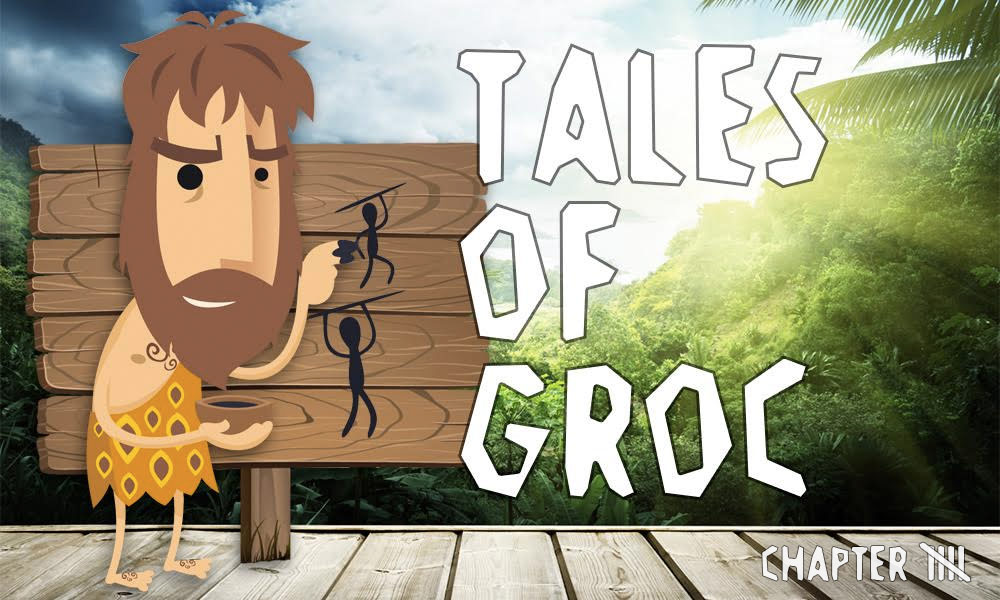Geologists from Stanford University recently made an astounding discovery. Drilling core samples in Palo Alto, a thousand feet below Sand Hill Road, they discovered the fossils of an ancient civilization. Their excitement grew as excavation revealed a Neanderthal community with complex tools, written language, and a primitive subscription economy.
A paleo-forensic team pieced together the daily life of one adult Neanderthal that lived there 40,000 years ago. They’ve published his narrative below, and titled their work the Tales of Groc, the Customer Success Caveman. Read Chapter 4 here.
Chapter 5: New Model
The weeks after the Thump conference were a busy time at StoneHenjj. CSMs had a significant backlog of work and the company’s sales reps were following up on the dozens of prospect meetings they had hosted. Reps and CSMs had been grunting praises of the upcoming release of Go-Cart. This new model of Cart was smaller, faster, and emphasized a fun user experience over any commercial application. Go-Cart was announced two days ahead of the Thump conference and had brought a lot of attention to the company.
But the new model of Cart was just half the story. StoneHenjj had also announced their new venture, a recreational Cart–racing league. The Neanderthal Association of Stone and Conifer Axle Racing Technology, NASCART for short, would combine high-speed excitement with cutting-edge technology. This created a slew of new marketing, sponsorship, and entertainment opportunities for StoneHenjj. While new business of the older Cart models was slumping, the company had created an entirely new vertical to own. The TAR (total available rabbits) was off the charts.
Groc was alarmed, however, when he began to receive some of the new accounts that had purchased Go-Cart. The engineers had designed the model for recreational use, with some high-speed delivery use-cases as well. But the first three Go-Cart subscribers assigned to Groc were larger Enterprise logos. Most would have been better off had they purchased an earlier model of Cart that was not as sleek, but was better suited for them. Some, lured by the conceptual appeal of Cart racing, had no strong use for Go-Cart at all.
One Sales-to-CSM handoff that Groc attended onsite at FleaWorld really stuck in his mind. FleaWorld was a large chain of petting-zoos that brought attendees up close and personal with mammoths. Sometimes, the company required high-speed transportation of mammoths between locations in the event that one fell ill or escaped its pen. They had misguidedly signed a two-year Go-Cart subscription for this need.
The meeting was in FleaWorld’s executive cave, and all key stakeholders were there: Groc, Grrr, who had sold the deal, Bam, the StoneHenjj project manager, and three key team members from FleaWorld. Someone had brought their pet Mammoth with them, who stood patiently in the corner of the cave.
The FleaWorld team was very enthusiastic. “Right now, it takes us three days to move a mammoth from our Bedrock location to Cretaceous Canyon. With the speed of Go-Cart, we’re hoping to cut that to just three hours.” Groc was antsy. Had they even seen a Go-Cart in person? “We’d like to be fully implemented by the rainy season,” the FleaWorld team continued, “who should we reach out to for technical issues relating to weather?” At this point, the mammoth in the corner had begun pawing at the ground, wanting attention. Groc wondered, was anyone going to address the mammoth in the room?
Groc held his tongue, sensing it was not the right setting. But he sent a message to FleaWorld that evening voicing his concerns. They were surprised and a bit disappointed, but agreed to re-sign their contract to be mostly Millenium Carts. They did keep a subscription for one Go-Cart to enter into the NASCART league. Groc was thrilled to see the FleaWorld #55 Go-Cart take the Cinnabar 200 Championship that summer.

